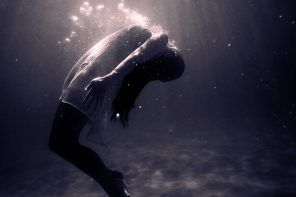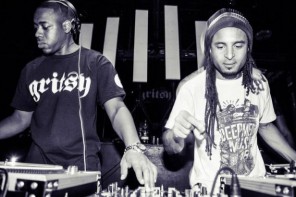If I were to attempt to describe Pretty Lights’ live performance in one word, FRESH is what comes to mind. I choose this word because in a music scene where to be on the “cutting edge” for many artists means turning everything up to 11 – heavier drops, wompier samples, and an assortment of other bells and whistles – it is truly refreshing to see someone take things to the next level in a much more organic way.
In order to fully appreciate what was happening on stage, one must first know a little about the newest Pretty Lights album that was released this past July. With A Color Map of the Sun, Derek Vincent Smith trail-blazed a new way to create electronic music. It is common practice for EDM artists to sample music by other artists in the production of their music. Smith himself frequently uses samples from old vintage vinyls in most if not all of his music. At least that was the case until he started working on A Color Map of The Sun. For the past two and a half years Smith has been in and out of various studios in Brooklyn, New Orleans, and Denver, working with a wide array of extremely talented musicians. Smith sat down with these musicians and conducted improvised sessions based on descriptions that he would come up with. “I would work with each musician individually to get the sound and the performance that I had in my head, and then simultaneously I would work with the engineer to craft the timbre and the sound of that instrument to emulate the time period, the genre, and the sound that we were going for,” Smith said in “The Making of Pretty Lights New Album: A Color Map of the Sun.”
To make the music in his head a reality, Smith not only brought together all the talent he could gather, he also incorporated as many different instruments as he could get his hands on. In the production of the album Smith used everything from a toy piano, a music box, and a resonator mandolin, to a trumpet violin, a nyckelharpa, a waterphone, and a marxophone. Do not feel ignorant if you have never heard of these instruments, I had to look each of them up myself. This just goes to show the extent Smith was willing to go in order to ensure that his ability to manifest his imagination would not be limited in any way.
Two and a half years later, after recording hours upon hours of jam sessions in the studio, the next step in this innovative process was to take all that recorded material and press it onto vinyl. A Color Map of the Sun was created using just as much sampling from vinyl as any other Pretty Lights album, except this time these vinyls consisted of 100% original material designed by Smith himself. As Smith describes it, “This new pretty lights album is a modern production album created completely with gear and hardware that existed 40 years ago. Really, its analog electronica in its purest form.”
After going through so much effort to create the unique and instrumental style of electronic music, I don’t know if there was any other option but to tour with a live band. A DJ set would simply never do the album justice. And so, The Analog Future Tour was born. The band would consist of legendary drummer Adam Deitch (Lettuce, Break Science); keyboardists Brian Coogan and Borahm Lee; Eric Bloom (Lettuce) on trumpet; and Scott Flynn (John Brown’s Body) on trombone.
The stage design, created by Greg Ellis, Phil Salvaggio, and Smith himself, was not only visually stunning but also intelligent and classy. As though to exemplify the concept of merging DJ’s with musicians, each band member was propped up on his own podium of LED lights. Throughout the night Ellis, a.k.a. “Laser Shark,” toggled through a large spectrum of visual stunts that always perfectly fit the mood of the song, keeping the audience engaged while not distracting from the music.
As the band took the stage in Boston at the House of Blues on October 29th, only a couple days before Halloween, the energy was already through the roof. Most of the crowd at this nearly sold out show was in costume, and after opening sets from HeRobust and SuperVision everyone was ready to go. Diving right in, Pretty Lights started playing tracks from the new album. The band performed each song perfectly, sounding exactly like the album versions but with a liveliness that can only be attained from a real band performance. There is an undeniably substantial difference between listening to the recording of an instrument, and the experience of hearing and watching a musician play that instrument in front of you.
This is especially true with a horn section. Live horns just sound different in person; one can really feel the brassiness of them, and the musicians have the opportunity to portray a wider range of emotion on the fly. Bloom and Flynn were jumping around on stage seemingly having the times of their lives. At times going note for note back and forth, other times holding onto notes, bending them and letting them ring out.
Watching Coogan and Lee on the keyboards added a new dimension to the live electronica experience as well. The ability to watch a human lay down the synth and bass lines that are usually cranked out by laptops and midi controllers gave the audience depth and clarity into how electronic music is put together.
Having performed whole tours together in the past, Smith and Deitch effortlessly worked together as a dynamic duo, creating the perfect mesh of old-school and cutting edge. Deitch laid down the hip-hop feel with his signature style and sound – his drums sounding soft, warm, and almost vintage. Meanwhile Smith would be tapping out electronic drumbeats on his controllers, giving the music the untz that shakes and drives the dance floor. Occasionally Smith would also step back from his electronics and pick up the bass guitar. While it is a true feat for a DJ to perform with a band, picking up an instrument takes things a step further. It helps the crowd see that Smith didn’t just hire musicians to translate his music into a live performance for him, but that he himself is also a musician and not just a producer.
Throughout the night I believe most of the tracks from A Color Map of the Sun were played, along with many other Pretty Lights hits such as: “I Can See It In Your Face,” “Total Fascination,” “Look Both Ways,” “Can’t Stop Me Now,” “Hot Like Sauce,” and the cult classic every fan wants to hear, “Finally Moving.” In addition to his originals, Pretty Lights also performed two of his popular remixes: “Fly Like an Eagle,” originally by Steve Miller Band; and one of my personal favorites, a mash up of “Everything In Its Right Place” by Radiohead, “All Apologies” by Nirvana, and “Closer” by Nine Inch Nails. Each song segued into the next seamlessly with only occasional breaks for some commentary from Smith to pump the crowd up. Not that they needed it, as I looked around for the most part I only saw two kinds of people: Those standing still, eyes concentrated hard at the stage, paying close attention to each of the musicians; or those dancing their hearts out, eyes closed, lost in the moment.
To say Pretty Lights has had a successful career would be a huge understatement. I remember seeing him as an opening act back in 2009 at The Paradise, a venue that at the time had a capacity of under 1000 people. Today he headlines massive festivals all over the world, and plays sold out shows at some of the most legendary venues across the country. Surely fame did not come easily to Smith, but it did come very quickly. Such a speedy rise to the top can sometimes be accompanied with a drop in the standard of quality of work due to the sudden overwhelming success. A Color Map of the Sun and The Analog Future Tour are proof that with Pretty Lights this is not the case. I have the utmost respect for an artist that thinks outside the box and finds ways to reinvent himself, for it is crucial to the evolution of the music scene. I can only hope Pretty Lights continues to work in this vein, and I cannot wait to see what he comes up with next.






